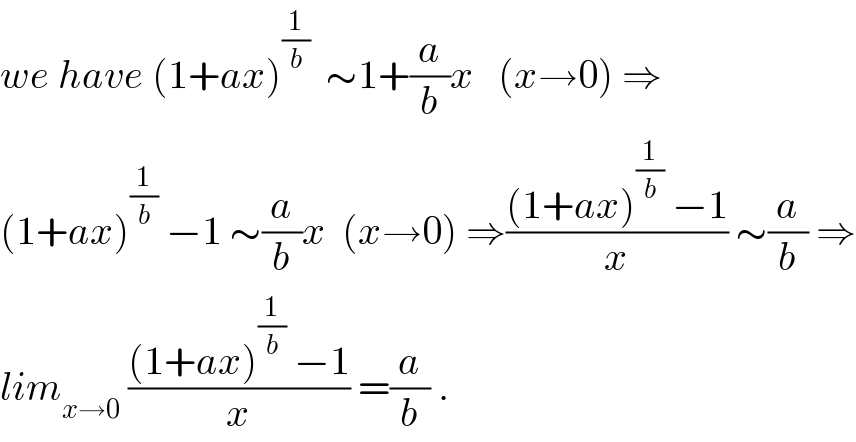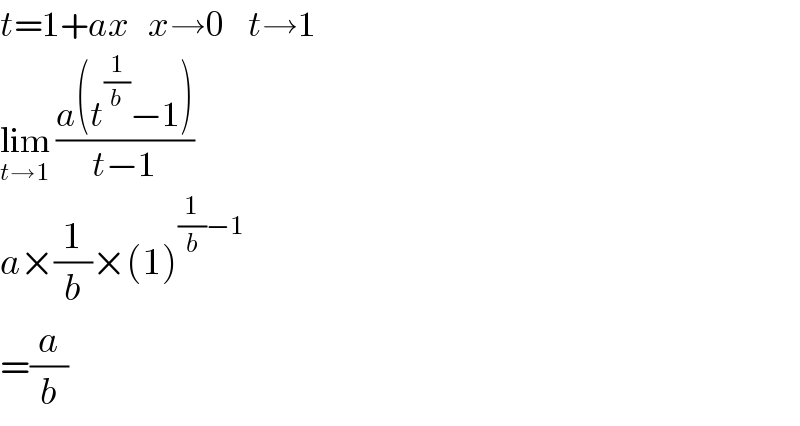
Question and Answers Forum
Question Number 44652 by rahul 19 last updated on 02/Oct/18

Commented by rahul 19 last updated on 02/Oct/18

Commented by maxmathsup by imad last updated on 02/Oct/18

Commented by rahul 19 last updated on 02/Oct/18

Commented by maxmathsup by imad last updated on 02/Oct/18

Answered by math1967 last updated on 02/Oct/18
![x^(lim) →0 ((a{(1+ax)^(1/b) −1})/(ax)) a ^(lim) x→0 (((1+ax)^(1/b) −1)/(ax)) (a/b) proved [ ^(Lim) x→0 (((1+x)^n −1)/x) ( n=any rational..) =n]](Q44657.png)
Commented by rahul 19 last updated on 02/Oct/18

Answered by tanmay.chaudhury50@gmail.com last updated on 02/Oct/18

Commented by rahul 19 last updated on 02/Oct/18

